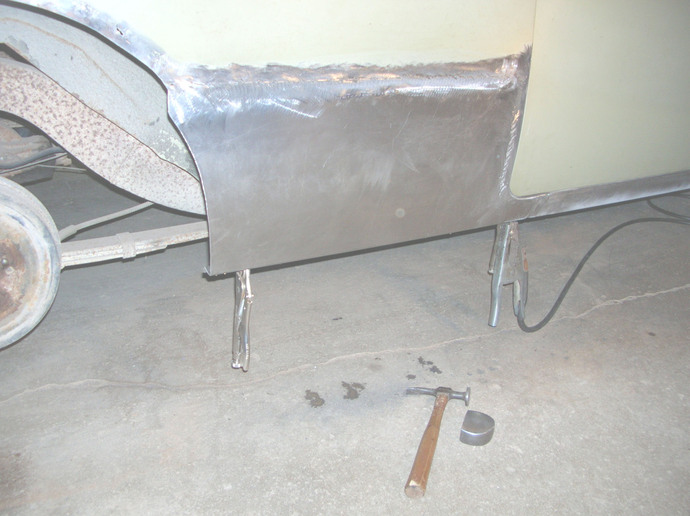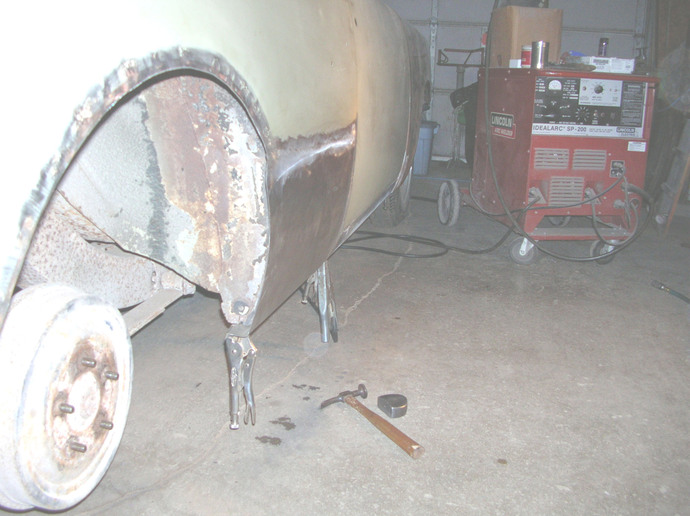Hey yall...
Well, yesterday, I was approached by someone who heard that I do some welding and he wants me to help him fix the rust on his truck. Its a mid 90s F150, and the bed sides are rotted away.
He has bought some new 2x2 patch sections that are a perfect match, and just needs someone to weld them in.
To be clear, Ive never done anything auto-body, although I have played around with some thin (18-20 ga) sheet with my mig. I have no problem with turning this down if the general consensus here is to do that, Im just asking for advice here.
Im assuming that I would lay the new panels over the old, clamp them down, and go along the outside with a permanent marker, then remove the new panels and bust out the angle grinder with some cutoff wheels, and remove the old sections.
Then, Id just set the new panels in, turn down the mig (way down) and weld them in short sections (like a million little tack welds), and let them cool to prevent warping.
Once its all welded out, id hit it with a course flap disc to grind down the bead, and then a fine flap disc to smooth it all out.
My main questions:
1)How hard will this be? Anything else I should do, besides unhook the battery? Anything you can tell me to prevent warpage would be great... I guess I just tack in random places, FAR APART.
2)Anything else that I should know? Just wondering. Thanks everyone.
Well, yesterday, I was approached by someone who heard that I do some welding and he wants me to help him fix the rust on his truck. Its a mid 90s F150, and the bed sides are rotted away.
He has bought some new 2x2 patch sections that are a perfect match, and just needs someone to weld them in.
To be clear, Ive never done anything auto-body, although I have played around with some thin (18-20 ga) sheet with my mig. I have no problem with turning this down if the general consensus here is to do that, Im just asking for advice here.
Im assuming that I would lay the new panels over the old, clamp them down, and go along the outside with a permanent marker, then remove the new panels and bust out the angle grinder with some cutoff wheels, and remove the old sections.
Then, Id just set the new panels in, turn down the mig (way down) and weld them in short sections (like a million little tack welds), and let them cool to prevent warping.
Once its all welded out, id hit it with a course flap disc to grind down the bead, and then a fine flap disc to smooth it all out.
My main questions:
1)How hard will this be? Anything else I should do, besides unhook the battery? Anything you can tell me to prevent warpage would be great... I guess I just tack in random places, FAR APART.
2)Anything else that I should know? Just wondering. Thanks everyone.



